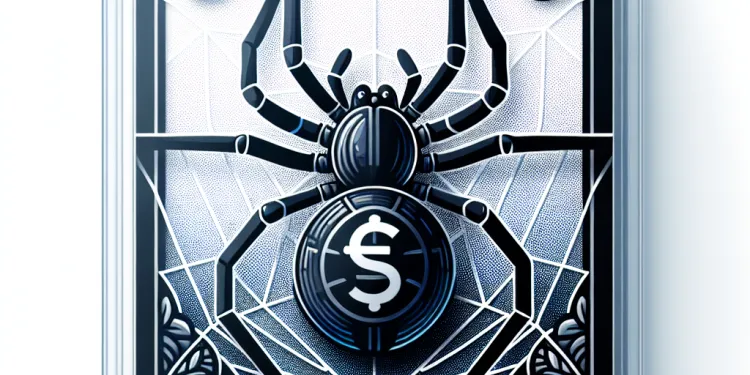
Find Help
More Items From Ergsy search
-
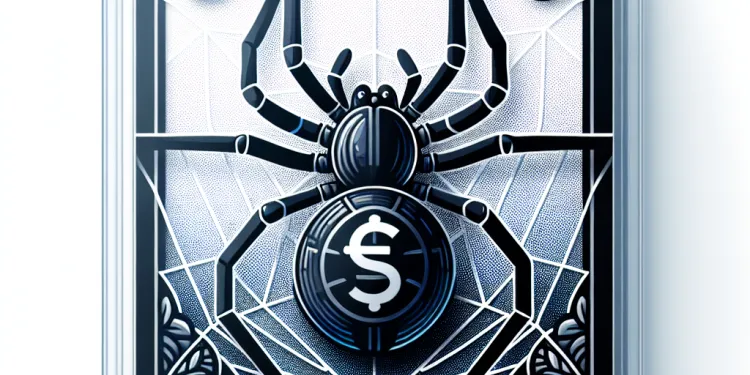
How can I identify a false widow spider?
Relevance: 100%
-

Is the bite from a false widow spider dangerous?
Relevance: 100%
-

What is the most dangerous spider in the UK?
Relevance: 69%
-

Are UK spiders venomous?
Relevance: 63%
-

Which spiders in the UK can bite humans?
Relevance: 63%
-

Are there any poisonous spiders in the UK?
Relevance: 62%
-

Do UK spiders pose a threat to pets?
Relevance: 57%
-

Do spiders in the UK carry diseases?
Relevance: 56%
-

What should I do if I get bitten by a spider in the UK?
Relevance: 51%
-

Can UK spiders cause allergic reactions?
Relevance: 46%
-

Are there non-venomous spiders in the UK?
Relevance: 46%
-
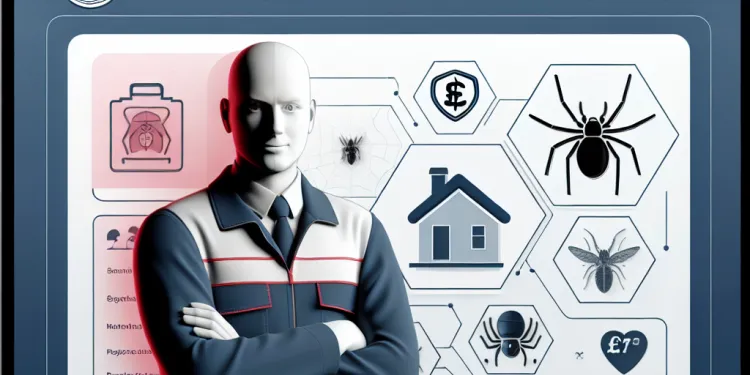
Is professional pest control needed for spiders?
Relevance: 44%
-

What should I do if I find a spider in my home?
Relevance: 43%
-

How common are spider bites in the UK?
Relevance: 36%
-
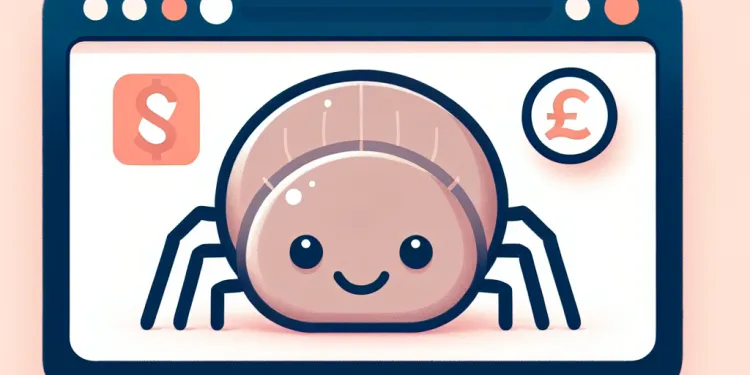
What types of spiders are commonly found in UK homes?
Relevance: 35%
-

What is a false pretence?
Relevance: 35%
-

Can I keep a spider in the UK as a pet?
Relevance: 34%
-

How big can spiders in the UK get?
Relevance: 33%
-
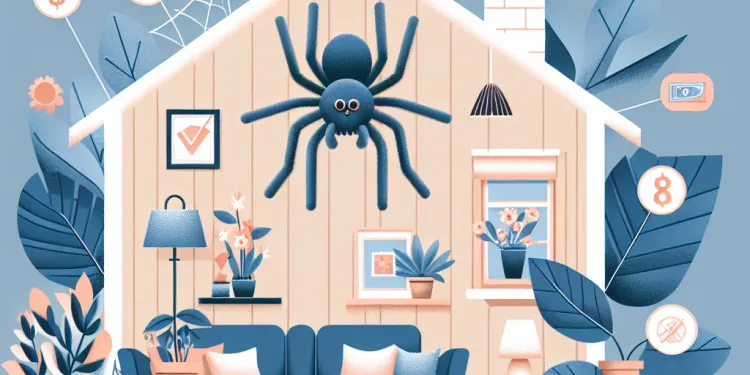
What are the benefits of having spiders in the home?
Relevance: 33%
-

Are there any precautions to take against spiders in the UK?
Relevance: 32%
-

Why might there be more spiders in the home during autumn?
Relevance: 31%
-

What can cause a false positive pregnancy test?
Relevance: 29%
-

Do fake weight loss products often have false certifications?
Relevance: 19%
-

How reliable are mammograms?
Relevance: 12%
-

Are there risks associated with home colorectal cancer tests?
Relevance: 12%
-

Are there any risks associated with mammograms?
Relevance: 12%
-

Can a pregnancy test expire?
Relevance: 12%
-

How does a pregnancy test work?
Relevance: 11%
-

Are there any native mosquito predators in the UK?
Relevance: 10%
-

Is it possible for self-tests to cause harm?
Relevance: 10%
-

Can stress affect a pregnancy test result?
Relevance: 10%
-

Think Pharmacy: Introduction for Bites and Stings
Relevance: 10%
-

What if my pregnancy test is positive?
Relevance: 10%
-

Can medications affect pregnancy test results?
Relevance: 9%
-

How soon can a pregnancy test detect pregnancy?
Relevance: 9%
-

What are offences of dishonesty?
Relevance: 8%
-

What tests are available for diagnosing Lyme disease?
Relevance: 8%
-

Is manipulation of stocks an offence of dishonesty?
Relevance: 8%
-

What is fraud?
Relevance: 7%
-

What is a mammogram?
Relevance: 7%
Introduction to False Widow Spiders
The false widow spider has become a subject of intrigue and concern in the UK, particularly due to its increasing population and the occasional media reports of bites. Originating from warmer climates, these spiders have adapted well to the British environment. Understanding how to identify them is crucial in distinguishing them from harmless native spiders.
Physical Characteristics
False widow spiders, scientifically known as Steatoda nobilis, are medium-sized with a body length of approximately 7 to 15mm. They have a bulbous, shiny abdomen that can range in color from purple-brown to black, often featuring cream markings that resemble a skull or other patterns. Their legs appear reddish-orange in color. These distinct physical traits help differentiate them from other similar-looking spiders.
Behavior and Habitat
False widows are typically reclusive, preferring to inhabit quiet, undisturbed areas. They are commonly found in sheds, garages, and lofts but may venture indoors as temperatures drop. Unlike other UK spiders, false widows build their webs high off the ground, often attaching them to ceilings or the upper corners of rooms. While they can bite, they are generally not aggressive and tend to strike only when provoked or trapped against the skin.
Comparing with Native Spiders
Several native UK spiders are often confused with the false widow, most notably the harmless domestic house spider. However, the false widow’s glossy, dark body and the distinctive skull-like pattern on its abdomen set it apart. Other domestic spiders typically have a more matte appearance and lack the reddish hue in their legs.
Medical Relevance
While reports of false widow bites can cause alarm, it's important to note that these incidents are infrequent and typically result in symptoms similar to a bee sting, such as localized pain and swelling. Severe reactions are rare but may require medical attention, especially in individuals with allergies or compromised immune systems. Nonetheless, the false widow's venom is much less potent than that of its more infamous cousin, the black widow.
What to Do If You Find One
If you encounter a false widow spider in or around your home, there are several options for dealing with them safely. You may choose to relocate them using a container and a piece of card. Ensure windows and doors are sealed to prevent further entry, and keep clutter to a minimum to reduce hiding spots. Additionally, insect deterrents and spider traps can be effective tools in managing their presence.
Conclusion
Identifying false widow spiders involves recognizing their distinctive appearance, understanding their habits, and differentiating them from native species. Although their presence is increasingly common in the UK, their threat to humans is minimal. Being informed about these creatures enables a rational response and ensures they are dealt with safely if encountered.
What Are False Widow Spiders?
False widow spiders are becoming known in the UK. People talk about them more because there are more of them now, and sometimes they bite. They come from warmer places but like living in the UK now. It is important to know what they look like so you can tell them apart from other safe spiders.
What Do They Look Like?
False widow spiders are called Steatoda nobilis by scientists. They are medium size, about 7 to 15mm long. They have a big, round body that is shiny. Their body color can be purple-brown to black and usually has cream marks that look like a skull. Their legs are reddish-orange. These things make them look different from other spiders.
Where Do They Live and What Do They Do?
False widow spiders like to hide in quiet places. You can find them in sheds, garages, and lofts. They might also come inside when it gets cold. They make webs high up, like on ceilings or in the top corners of rooms. They can bite, but they don't usually do so unless they feel scared or trapped.
How Are They Different From Other Spiders?
Sometimes people mix up false widow spiders with other spiders, like the safe house spider. But false widows have a dark, shiny body with a skull-like pattern. Other spiders often look duller and do not have red legs.
Are Their Bites Dangerous?
False widow bites can worry people, but they don't happen often. Usually, a bite feels like a bee sting, with some pain and swelling. Serious reactions are rare, but if someone is allergic, they might need to see a doctor. Their venom is not as strong as the black widow spider's venom.
What To Do If You See One
If you find a false widow spider in your home, you can move it using a cup and a piece of paper. Make sure windows and doors are closed so more don't come in. Keep places tidy to give them fewer places to hide. You can also use sprays or traps to keep them away.
Summary
To know false widow spiders, look for their unique body and habits. They are becoming more common in the UK but are not a big risk to people. Knowing more about them helps you stay calm and handle them safely if you find one.
Frequently Asked Questions
What does a false widow spider look like?
False widow spiders have a shiny, bulbous body with a dark brown, purplish appearance and a cream-colored marking on their abdomen.
How big can a false widow spider grow?
Adult female false widow spiders can grow up to 14mm in body length, while males are slightly smaller, reaching up to 11mm.
Where are false widow spiders commonly found?
False widow spiders are commonly found in urban areas, often taking shelter in homes, sheds, and garages.
Is the false widow spider venomous?
Yes, the false widow spider is venomous, but its bite is usually mild and not harmful to most people.
What distinguishes false widow spiders from other spiders?
False widow spiders are often identified by their shiny, dark-colored bodies, and the distinctive cream markings on their abdomen.
Can false widow spiders be found outside the UK?
Yes, false widow spiders are found in several countries across Europe, and they have also been identified in parts of North America.
What is the typical habitat of a false widow spider?
False widow spiders prefer environments like the corners of buildings, window frames, and crevices that offer shelter and prey access.
Do false widow spiders make webs?
Yes, like many spiders, false widow spiders construct webs to catch their prey.
How can I tell if a spider is not a false widow?
If the spider lacks the false widow’s distinctive dark, glossy body and cream-colored abdominal markings, it is likely not a false widow.
What should I do if I find a false widow spider?
If you find a false widow spider, you can safely relocate it outside using a jar and a piece of paper, or contact pest control for assistance.
Are there any common spiders mistaken for false widows?
Yes, spiders like the common house spider and the cellar spider can sometimes be mistaken for false widows due to similar habitats.
How can I prevent false widow spiders from entering my home?
Seal cracks, use insect screens, reduce clutter, and remove webs regularly to minimize the chances of false widow spiders entering your home.
Do false widow spiders pose a danger to pets?
False widow spider bites can potentially harm small pets, but such incidents are rare and usually not life-threatening.
When are false widow spiders most active?
False widow spiders are generally more active during the warmer months of late spring to early autumn.
Can false widow spiders survive in winter?
Yes, false widow spiders can survive winter, especially if they find shelter in warm indoor environments.
What should I do if I am bitten by a false widow spider?
Clean the area with soap and water, apply a cold compress, and seek medical advice if symptoms persist or are severe.
What attracts false widow spiders to homes?
False widow spiders are attracted to homes by the abundance of prey and suitable shelter within personal property environments.
How long does a false widow spider live?
False widow spiders can live for up to 3 years depending on environmental conditions and availability of food.
Can false widow spiders reproduce indoors?
Yes, if they find a suitable environment with enough resources, false widow spiders can reproduce indoors.
What are some common myths about false widow spiders?
Common myths include overestimating their venom's danger and mistaking all shiny, dark spiders as false widows.
What does a false widow spider look like?
A false widow spider is a small spider.
It has a dark brown body.
Its body is round like a ball.
It has pale markings on its body.
The legs are orange-brown.
Helpful Tips:
- Look at pictures of false widow spiders online.
- Ask someone to help you find more pictures.
False widow spiders have shiny, round bodies. They are dark brown or purple in color. They also have a creamy white mark on their tummies.
How big does a false widow spider get?
A false widow spider can grow as big as a £2 coin.
If you have trouble reading about spiders, you can:
- Ask someone to help you.
- Look at pictures to understand better.
- Read slowly and say the words out loud.
Grown-up girl false widow spiders can get as big as 14mm. Boy spiders are a bit smaller, getting as big as 11mm.
Where do false widow spiders usually live?
False widow spiders like to live in warm and dry places.
They are often found in houses, sheds, and garages.
You might also see them on walls or in corners that are quiet.
To help you understand better, you can use pictures or ask someone to explain it to you.
False widow spiders like to live in cities. They often hide in houses, sheds, and garages.
Does the false widow spider have poison?
Yes, the false widow spider has venom. But its bite is usually mild and not dangerous for most people.
How can you tell false widow spiders from other spiders?
False widow spiders look different from other spiders. They have round, brown bodies. Their legs are a bit long and shiny.
If you need help reading, you can use your finger to follow the words. You can also ask someone to read with you.
False widow spiders have shiny, dark bodies. You can spot them by the cream marks on their bellies.
Do false widow spiders live in places other than the UK?
Yes, false widow spiders can be found in other countries too. They are not only in the UK.
If you want help reading, you can use pictures or ask someone to read with you.
Yes, false widow spiders live in many countries in Europe. They also live in some parts of North America.
Where do false widow spiders usually live?
False widow spiders like to live in places such as building corners, window frames, and small cracks. These spots give them a safe home and make it easy to find food.
Do false widow spiders make webs?
Yes, false widow spiders make webs. These webs are sticky and look messy. The spiders use these webs to catch food.
If you want to learn more, you can look at pictures of false widow spiders and their webs. You can also use audio books or videos about spiders. These can help you understand better.
Yes, false widow spiders make webs to catch their food, just like many other spiders.
How do I know if a spider is not a false widow?
You can check if a spider is not a false widow by looking at its body and legs. Here are some tips: - **Body Shape and Pattern:** False widows have big, round bodies with white marks. - **Legs:** Check if the spider's legs are brown and not thick. - **Color:** Most false widows are dark brown. Look for different colors. Use a picture of a false widow to compare the spider you see. **Tools and Techniques:** - Use a magnifying glass to see the spider better. - Get help from an adult if you're not sure. - Look at pictures online to see different spiders.If the spider does not have a shiny, dark body and cream-colored marks on its belly like the false widow spider, it is probably not a false widow.
What to do if you see a false widow spider?
If you find a false widow spider, don't worry. Here is what you can do:
- Stay calm and don't touch the spider.
- Use a jar to safely catch it if you can.
- Move it outside, away from people.
- If you are unsure, ask an adult for help.
If you are scared or need more help, you can:
- Look at pictures of spiders online to learn more.
- Ask someone to help you read about spiders.
If you see a false widow spider, do not worry. You can move it outside safely. Use a jar and a piece of paper to help you. Or, you can ask pest control to help you. They are very good at this.
Do people mix up false widows with other spiders?
Some spiders look like false widows. It is easy to make a mistake. Here are some tips to help you:
- Look at pictures of false widows.
- Use a magnifying glass to see details.
- Ask an adult for help.
Yes, some spiders look like false widows. These are spiders like the common house spider and the cellar spider. They live in the same places as false widows.
How can I stop false widow spiders from coming into my home?
Keep spiders out of your home by doing these things:
- Close up any cracks or holes.
- Use insect screens on windows and doors.
- Keep things tidy and don't leave piles of stuff.
- Clean away spider webs often.
These steps help stop false widow spiders from coming inside.
Are false widow spiders harmful to pets?
False widow spiders can sometimes bite small pets. But it does not happen often, and it usually will not make them very sick.
When do false widow spiders come out the most?
False widow spiders are busier when it's warmer. This is usually from late spring to early autumn.
Do false widow spiders live in winter?
Some spiders can live when it is cold. False widow spiders are one of them. They find warm places to stay, like inside houses. This helps them stay safe and alive during winter.
If you want help to read, you can:
- Ask someone to read with you.
- Use a reading app that reads the words out loud.
- Read slowly and take breaks if you need to.
Yes, false widow spiders can live through the winter. They do this by staying in warm places indoors.
What to Do If a False Widow Spider Bites You?
Wash the area with soap and water. Put something cold on it, like a bag of ice. If it still hurts a lot or doesn't get better, talk to a doctor.
Why do false widow spiders come into homes?
False widow spiders like to come into houses because there is lots of food for them to eat and places to hide.
How long does a false widow spider live?
A false widow spider can live for about 1 to 2 years. If you want, you can look at pictures of false widow spiders to know what they look like. You can also use a calendar to mark the months and see how long 1 to 2 years is. This can help you understand their lifespan better.
False widow spiders can live for 3 years if they have the right conditions and enough food.
Can false widow spiders have babies inside the house?
Yes, false widow spiders can have baby spiders inside if they find a good place with enough food and space.
What are some things people get wrong about false widow spiders?
Some people think these spiders are very dangerous, but they are not.
People also think that all shiny, dark spiders are false widows, but this is not true.
Useful Links
- Ergsy carfully checks the information in the videos we provide here.
- Videos shown by Youtube after a video has completed, have NOT been reviewed by ERGSY.
- To view, click the arrow in centre of video.
- Most of the videos you find here will have subtitles and/or closed captions available.
- You may need to turn these on, and choose your preferred language.
- Go to the video you'd like to watch.
- If closed captions (CC) are available, settings will be visible on the bottom right of the video player.
- To turn on Captions, click settings .
- To turn off Captions, click settings again.
More Items From Ergsy search
-

How can I identify a false widow spider?
Relevance: 100%
-

Is the bite from a false widow spider dangerous?
Relevance: 100%
-

What is the most dangerous spider in the UK?
Relevance: 69%
-

Are UK spiders venomous?
Relevance: 63%
-

Which spiders in the UK can bite humans?
Relevance: 63%
-

Are there any poisonous spiders in the UK?
Relevance: 62%
-

Do UK spiders pose a threat to pets?
Relevance: 57%
-

Do spiders in the UK carry diseases?
Relevance: 56%
-

What should I do if I get bitten by a spider in the UK?
Relevance: 51%
-

Can UK spiders cause allergic reactions?
Relevance: 46%
-

Are there non-venomous spiders in the UK?
Relevance: 46%
-

Is professional pest control needed for spiders?
Relevance: 44%
-

What should I do if I find a spider in my home?
Relevance: 43%
-

How common are spider bites in the UK?
Relevance: 36%
-

What types of spiders are commonly found in UK homes?
Relevance: 35%
-

What is a false pretence?
Relevance: 35%
-

Can I keep a spider in the UK as a pet?
Relevance: 34%
-

How big can spiders in the UK get?
Relevance: 33%
-

What are the benefits of having spiders in the home?
Relevance: 33%
-

Are there any precautions to take against spiders in the UK?
Relevance: 32%
-

Why might there be more spiders in the home during autumn?
Relevance: 31%
-

What can cause a false positive pregnancy test?
Relevance: 29%
-

Do fake weight loss products often have false certifications?
Relevance: 19%
-

How reliable are mammograms?
Relevance: 12%
-

Are there risks associated with home colorectal cancer tests?
Relevance: 12%
-

Are there any risks associated with mammograms?
Relevance: 12%
-

Can a pregnancy test expire?
Relevance: 12%
-

How does a pregnancy test work?
Relevance: 11%
-

Are there any native mosquito predators in the UK?
Relevance: 10%
-

Is it possible for self-tests to cause harm?
Relevance: 10%
-

Can stress affect a pregnancy test result?
Relevance: 10%
-

Think Pharmacy: Introduction for Bites and Stings
Relevance: 10%
-

What if my pregnancy test is positive?
Relevance: 10%
-

Can medications affect pregnancy test results?
Relevance: 9%
-

How soon can a pregnancy test detect pregnancy?
Relevance: 9%
-

What are offences of dishonesty?
Relevance: 8%
-

What tests are available for diagnosing Lyme disease?
Relevance: 8%
-

Is manipulation of stocks an offence of dishonesty?
Relevance: 8%
-

What is fraud?
Relevance: 7%
-

What is a mammogram?
Relevance: 7%


